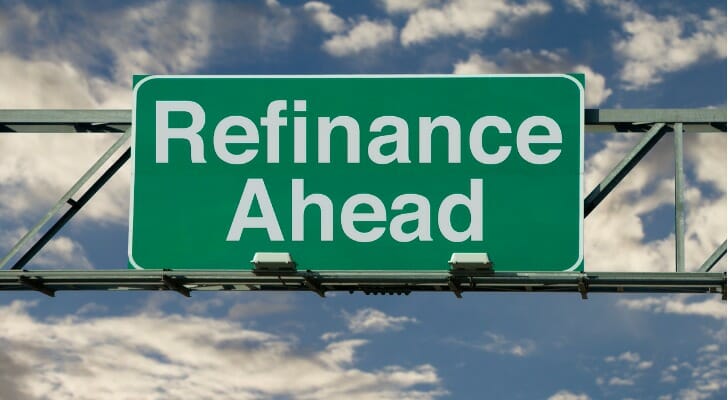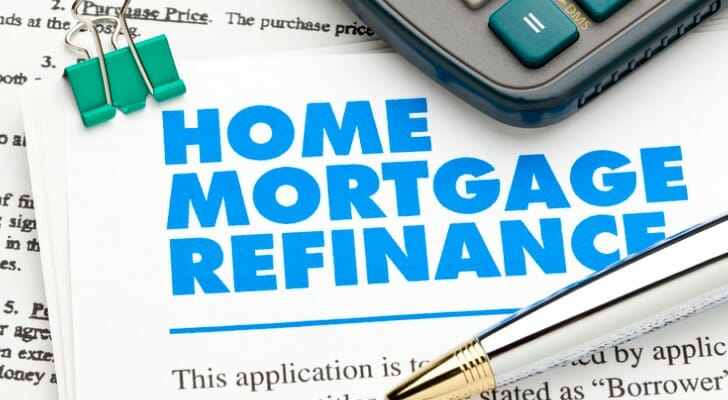Between the paperwork, fees and seemingly endless phone calls to your lender, refinancing your home can be a major headache. If your mortgage loan is insured by the Federal Housing Administration, you may be able to avoid some of the hassle by applying for an FHA streamline refinance. You have to meet certain requirements to qualify and it helps to understand what to expect before you get started. If you’re interested in applying for a streamline refinance, here’s a breakdown of how the program works. Consider working with a financial advisor as you look for ways to get the best financing.
What the FHA Streamline Refinance Program Is
The FHA streamline refinance program is designed to help homeowners save time and money during the refinance process. Unlike a traditional refinance, there’s not as much documentation required and the underwriting process typically takes less time. Homeowners don’t have to verify their employment or income and credit scores typically aren’t taken into consideration. The other major difference is that a home appraisal is not necessary to refinance.
This type of refinancing can be either credit-qualifying or non-credit-qualifying. With the former there must be a credit check, income must be verified and the debt-to-income ratio must be reported. In either case, the goal is to lower mortgage principal and interest payments
What It Takes to Qualify for the FHA Streamline Refinance
There are a number of conditions that must be met before you qualify for an FHA streamline refinance.
An Existing FHA loan
There are some basic requirements that homeowners must meet to qualify for a streamline refinance. First, your loan has to be insured by the FHA. There are no exceptions to this rule. So if you got your mortgage from the Veterans Administration or a traditional lender you’ll have to look into other options for refinancing.
Timely Payments
The next criteria is you have to be current on your mortgage. You must have made all of your payments on time and in full for the last 12 months. Otherwise you’re ineligible for the program. If you’ve previously refinanced, you have to wait 210 days from the closing date to apply for an FHA streamline refinance and have made at least six payments on your mortgage.
Net Tangible Benefit
According to the federal guidelines, a streamline refinance has to result in one of the following: a percentage reduction of at least 0.05% in the combined interest rate and mortgage insurance premium; or the conversion of an adjustable rate mortgage to a fixed-rate loan. This is sometimes referred to as the “net tangible benefit.” You can’t use a streamline refinance to cash out the equity in your home and your loan balance can’t be increased as a result of the refinance.
FHA Mortgage Insurance Requirement

If you’ve got an FHA loan, you already know that you’re required to pay upfront and also annually a mortgage insurance premiums. This requirement doesn’t change if you’re doing a streamline refinance. If you took out your current mortgage prior to June 1, 2009, you’ll have to pay an upfront premium of 0.01%of the loan amount. The annual premium is 0.55% of what you initially borrowed but you can cancel the insurance once your loan balance drops below 78%.
If you got an FHA mortgage after June 1, 2009, the upfront and annual premiums are significantly higher. The upfront premium is 1.75% and the annual premium can range from 0.45% to 1.35%, depending on your loan term. If your loan-to-value ratio was 90% or less at closing, you can eliminate the annual premiums after 11 years. If your loan-to-value ratio was more than 90%, you’re stuck paying the premiums for the life of the loan.
Pros and Cons of a Streamline Refinance
A streamline refinance offers several advantages for homeowners who are looking to save on their mortgage. With no credit check or employment verification required, it’s relatively easy to qualify compared to a traditional refinance. Not having to get a home appraisal is also a boon, particularly for homeowners who are still underwater, that is, who have a mortgage that is more than their residence is worth.
One of the biggest drawbacks of a streamline refinance are having to pay the mortgage insurance premiums and closing costs. Further, this type of refinancing is only available if you have an FHA loan. If you’ve got a newer FHA loan, you can expect your upfront and annual premiums to be higher, which means your payments could also go up. You won’t be able to finance your closing costs into the new loan so you’ll have to make sure you’ve got enough cash on hand to cover it. Some lenders may offer a no-closing cost loan, but this could actually end up costing you more in the long run so you should consider it carefully.
Bottom Line

A streamline refinance will most likely save you money if you took out your FHA loan before June 1, 2009, but it’s not a guarantee if you’ve got a newer loan. Your best bet is to look into your refinancing options before making a decision. Doing a little research beforehand could save you thousands of dollars later on.
Tips on Mortgages
- A financial advisor can offer invaluable insight and guidance as you explore financing options. Finding a qualified financial advisor doesn’t have to be hard. SmartAsset’s free tool matches you with up to three financial advisors who serve your area, and you can interview your advisor matches at no cost to decide which one is right for you. If you’re ready to find an advisor who can help you achieve your financial goals, get started now.
- Use SmartAsset’s mortgage comparison tool to compare mortgage rates from top lenders and find the one that best suits your needs.
Photo credit: ©iStock.com/Bill Oxford, ©iStock.com/xxx, ©iStock.com/MCCAIG
